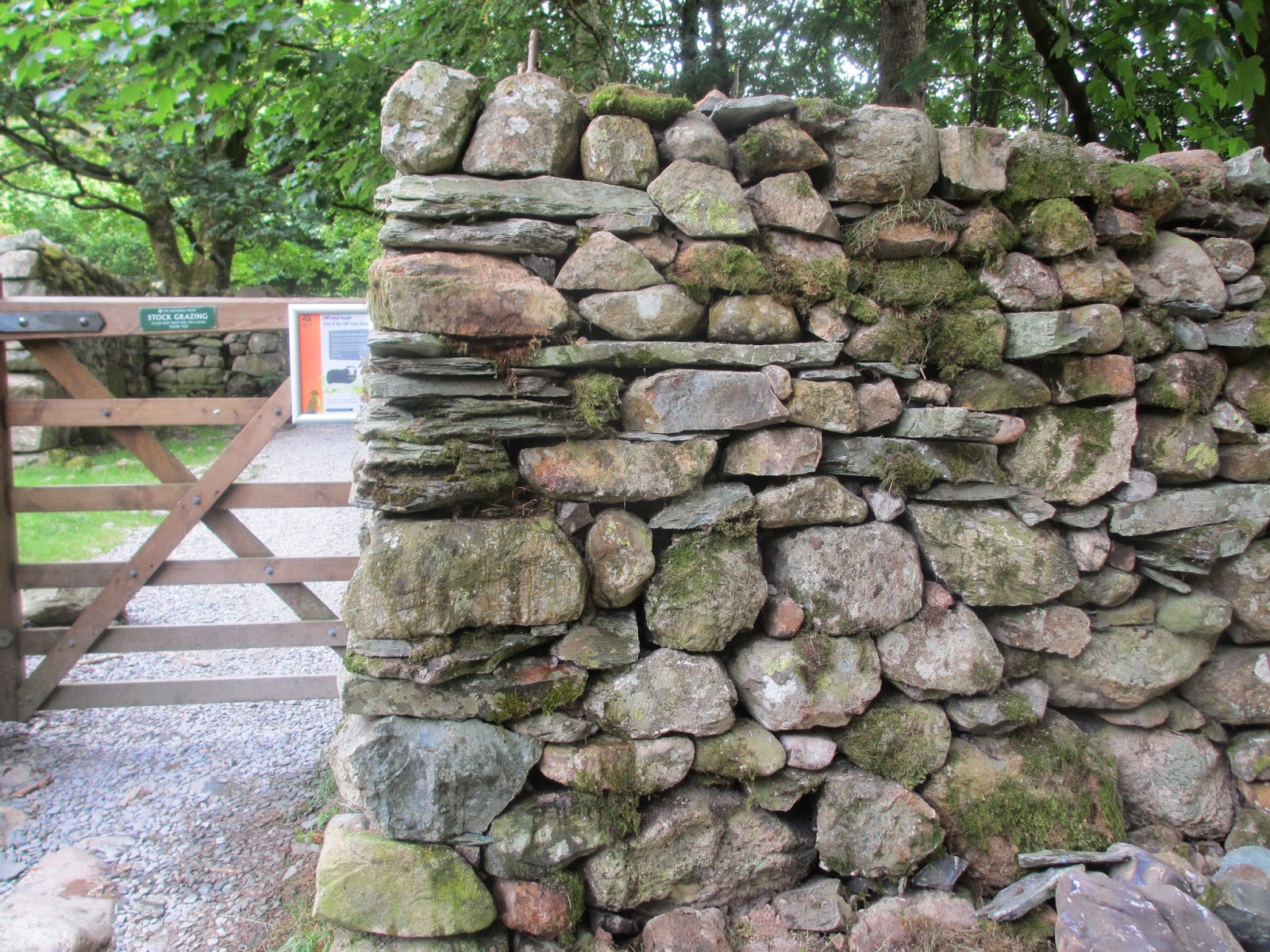Litter.
On Monday the first job was to clear up litter from Windermere's lake shore after a weekend of sunny weather; the image above was taken at Millerground. Cockshott Point and Jenkyn's field are other lake shore properties that are regularly patrolled by Central and East Lakes countryside rangers.
Millerground Gates.
The oak gates to Millerground were not looking at their best. The fittings were ready for a repaint as well.
The gates were sanded down..
treated to some teak oil..
and the fittings including the hinges and gate catch repainted.
Wall by the path to Stickle Ghyll.
Part of the wall, particularly the coyne end by the gate, was ready for a rebuild; the image above shows the wall in the process of being taken down prior to rebuilding it.
Rebuilding well underway. Very cramped worksite.
Rebuilding well underway. Very cramped worksite.
Work was frequently interrupted by the many visitors using the path. Good opportunities to engage! This school group are on their way back from ghyll scrambling.
The rebuilt section of wall finally completed!
Image of coyne end from the other side, next to the viewing area for the bird feeding station.
Image of coyne end from the other side, next to the viewing area for the bird feeding station.
Invasive Species Control.
The rare Touch Me Not balsam stands ..the only balsam native to the UK... are constantly under threat from the highly invasive Himalayan Balsam..(the larger plants in the image above). If left unchecked they will encroach more and more on the native plants and take their place.
Touch Me Not Balsam is the only food source for the rare Netted Carpet Moth caterpillars...see post To Conserve and Protect! on this blog site.
Touch Me Not Balsam is the only food source for the rare Netted Carpet Moth caterpillars...see post To Conserve and Protect! on this blog site.
The pink flower of the Himalayan Balsam.
The yellow flower of the Touch Me Not Balsam.
Himalayan Balsam pulled out from the vicinity of the Touch Me Not Balsam stand.
Netted Carpet Moth...usually on the wing between July until mid to late August.
Watering the trees at Troutbeck Park Farm.
The trees, especially the oaks, planted earlier this year as part of the project to enhance the wood pasture at Troutbeck Park Farm have struggled to come into leaf; the protracted dry spell is probably at the root of the problem. Regular watering of the trees is now taking place and thankfully leaves are now beginning to appear.
Water containers are filled up from Troutbeck itself and taken up by vehicle as far as possible to where the trees are. This process is surprisingly time consuming as the trees are widely spaced apart and need a lot of water at this critical stage of their development.


















No comments :
Post a Comment